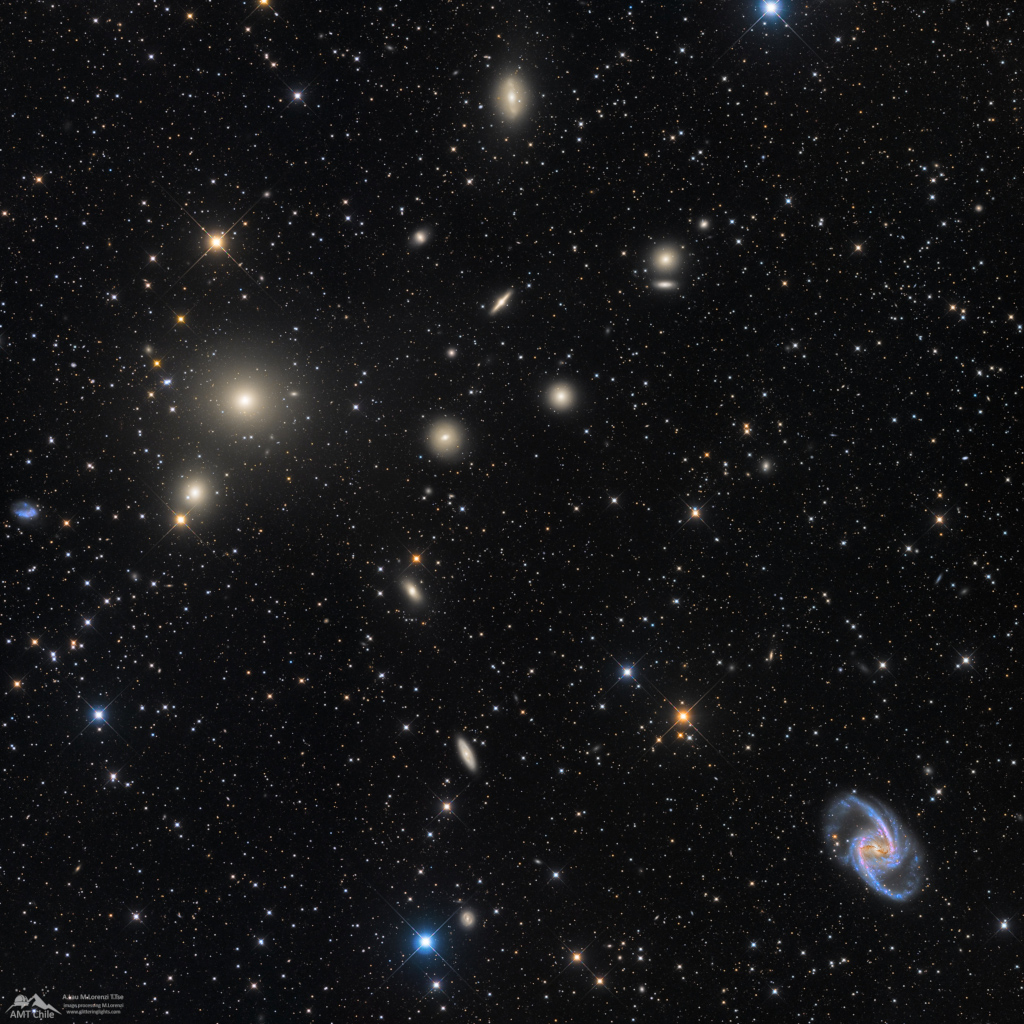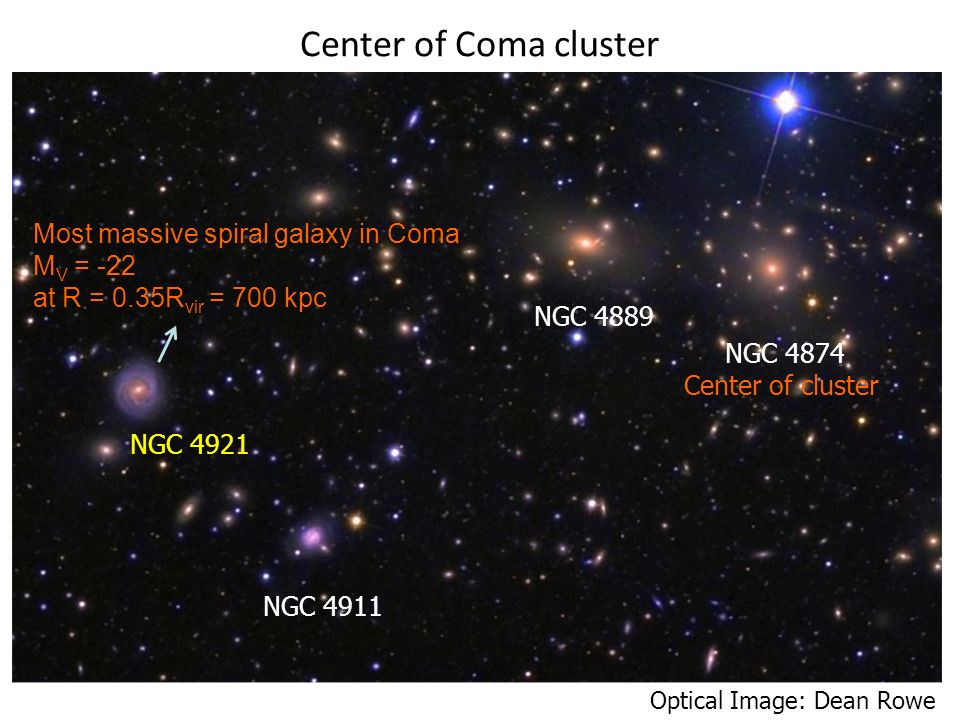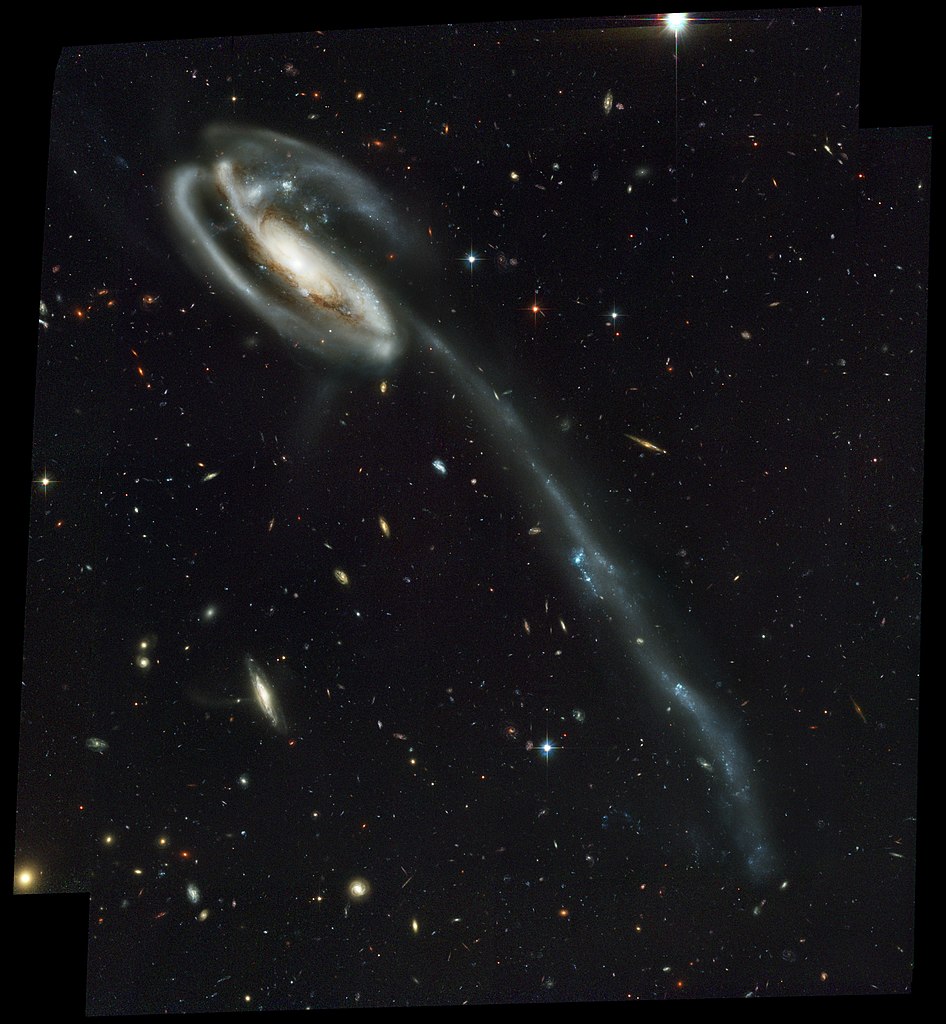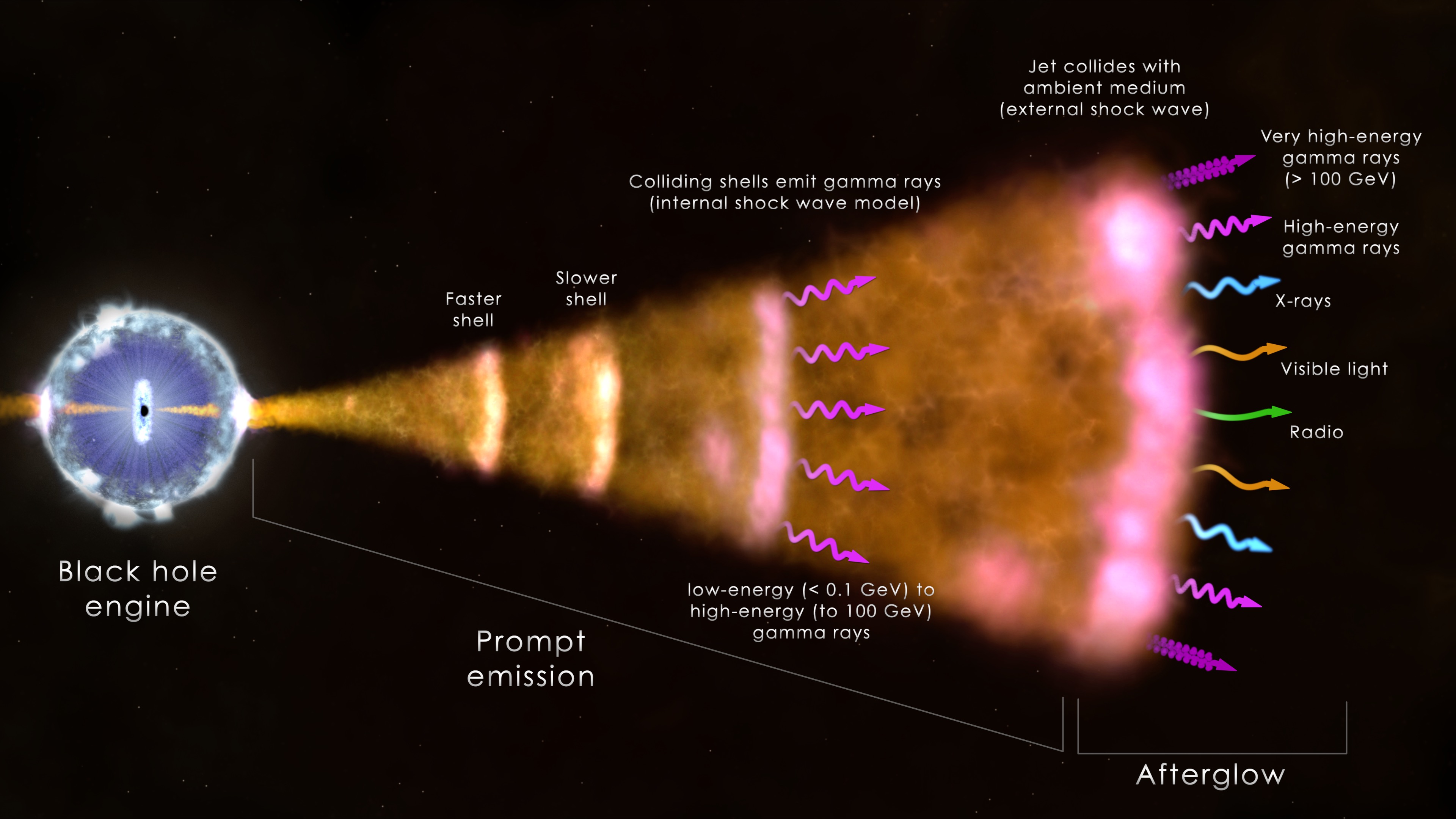Two things stand out in the Fornax Cluster of galaxies (henceforth: the Fornax Cluster). The most striking object in the cluster is obviously the fantastic large barred grand design (two-armed) spiral NGC 1365 at lower right. The other striking aspect of the image is that virtually all the other galaxies in the image (except tiny NGC 1427A at far left) are "all yellow" and therefore (almost) completely lacking in star formation. We may also note that the largest yellow galaxy in the cluster, NGC 1399, completely lacks any structures or visible features. NGC 1399 is a perfect example of a giant elliptical galaxy.
Giant galaxy cluster Abell 370.NASA, ESA, and J. Lotz and the HFF Team
It is interesting to compare the Fornax Cluster with the giant distant galaxy cluster Abell 370. A striking similarity is that so many of the galaxies are yellow, that the largest galaxies are ellipticals, and that so few of the galaxies show any obvious structures of features.
A striking difference between Abell 370 and the Fornax Cluster is the presence of all the streaks and arcs in Abell 370. These are background galaxies whose light is being magnified and whose (apparent) shapes are being stretched by the strongly curved spacetime caused by the tremendous mass of Abell 370. (Speaking of which - Abell 370 is a supergiant galaxy cluster crammed full of member galaxies, which the Fornax Cluster clearly is not!)
An interesting similarity between the Fornax Cluster and Abell 370 is that the bluest starforming galaxies (of those that are likely to be at the same distance from us as the cluster) are located at the outskirts of the cluster. The same pattern can be seen in the Coma Cluster. Yellow elliptical galaxies NGC 4889 and NGC 4874 are at the center of the cluster, and spiral galaxies
NGC 4911 and NGC 4921 that contain some star formation (although not a lot) are at the outskirts of the cluster.
An oddball among galaxy clusters is the Hercules Cluster of galaxies, which contains many
spirals and blue starforming galaxies even in its central part. The way I understand it, the Hercules Cluster is believed to be a galaxy cluster that formed recently when two smaller clusters collided or merged. In other words, the Hercules Cluster is not old enough to have evolved into a typical galaxy cluster whose members are mostly "red and dead" ellipticals and lenticulars (galaxies with disks but no spiral arms) and which contains a massive elliptical galaxy in its center.
Why does star formation stop in so many galaxies in galactic clusters? A probable reason is that all the galactic interactions in the dense cluster environment cause galaxies to expend their available gas reservoirs prematurely:
Galactic jostling in dense environments, and triggered bursts of violent star formation, are likely to deplete galaxies in clusters of much of their star forming raw material. Another gas-thief is ram pressure:
NGC 1427A, which can be seen at far left in today's APOD, is falling through the hot intergalactic medium of the Fornax Cluster, and it is being strongly affected by ram pressure. This causes NGC 1427A to form a lot of stars and at the same time lose a lot of its gas.
One reason why galaxies in dense galaxy clusters lose their star forming ability may be that the dominant elliptical galaxy of such clusters typically pump energy into the entire cluster through the jets emitted by the accretion disks of their black holes. This continuous injection of energy into the entire intergalactic medium surrounding the dominant galaxy affects the neighboring galaxies too and prevents their own gas from cooling down enough to form stars.
The above image gives you an idea of the power of the jets emitted by the accretions disks of supergiant elliptical galaxies and the effects they may have on their environments.
Ann
 The Fornax Cluster of Galaxies
The Fornax Cluster of Galaxies








